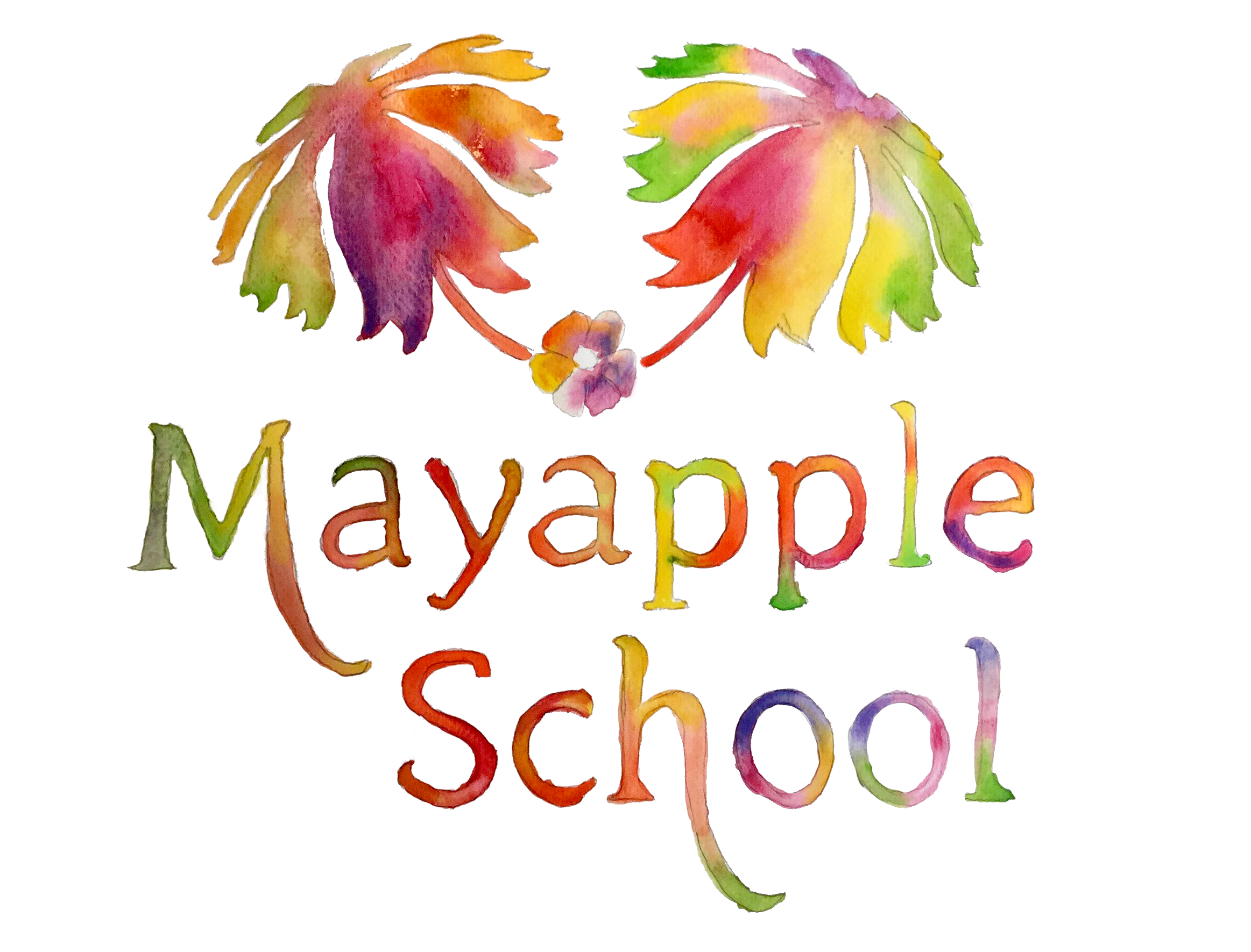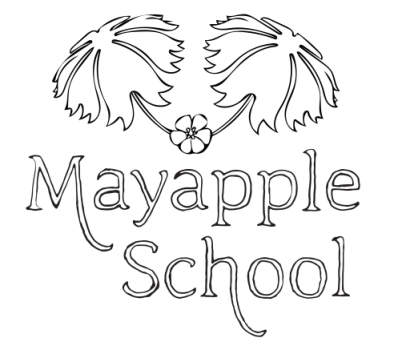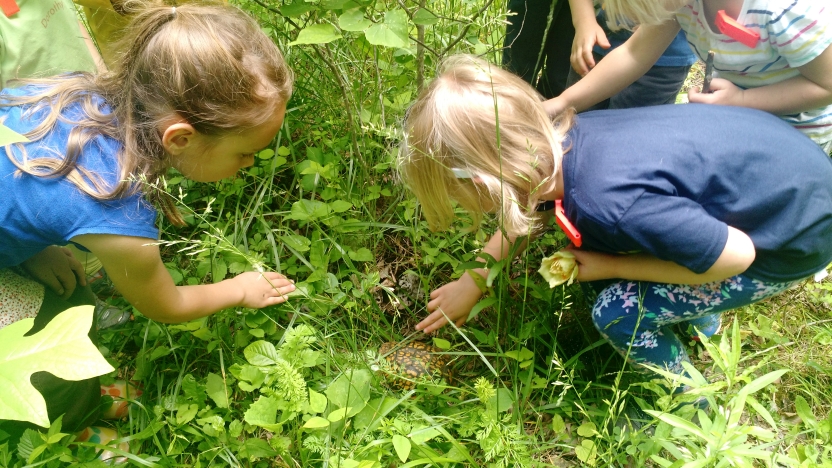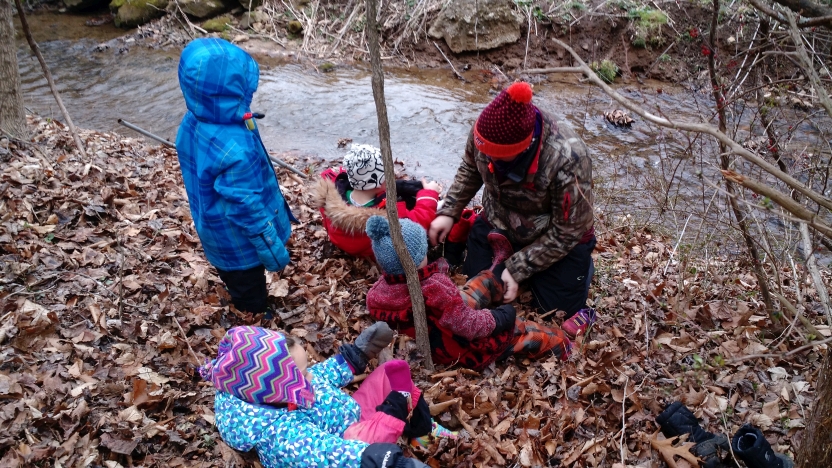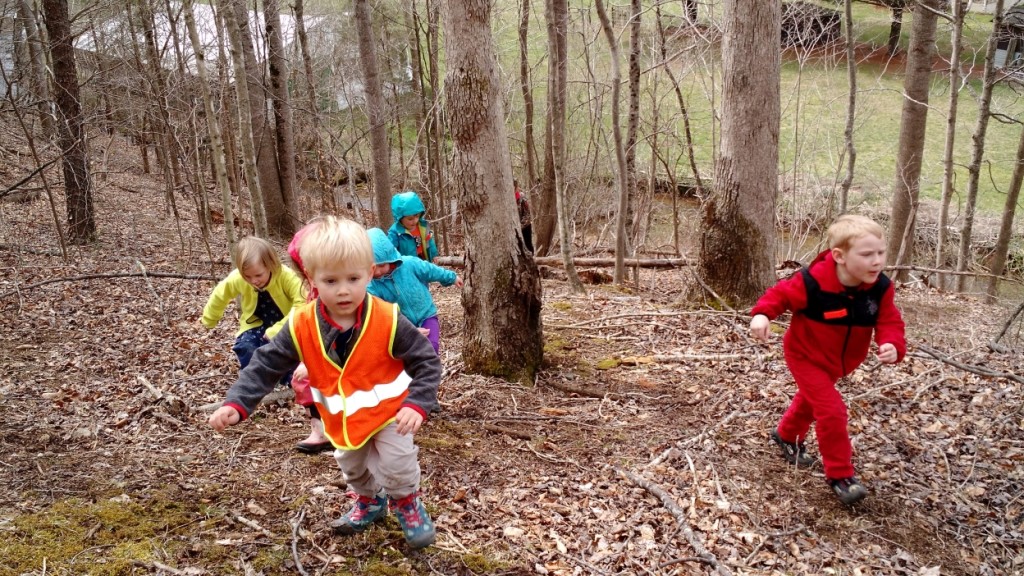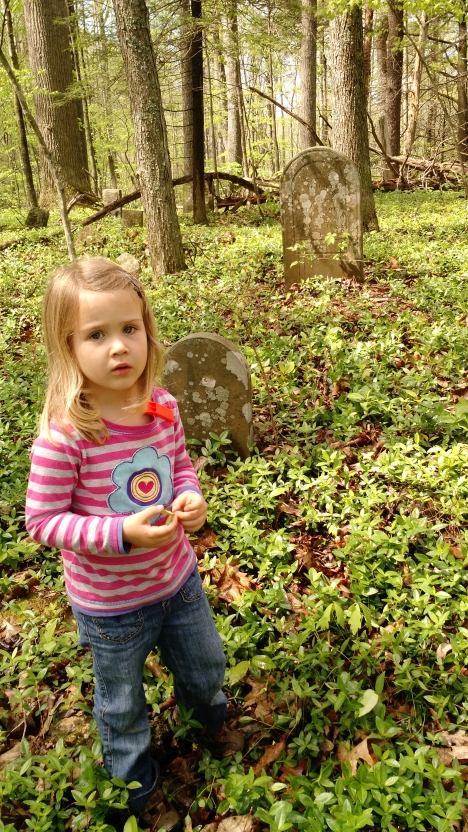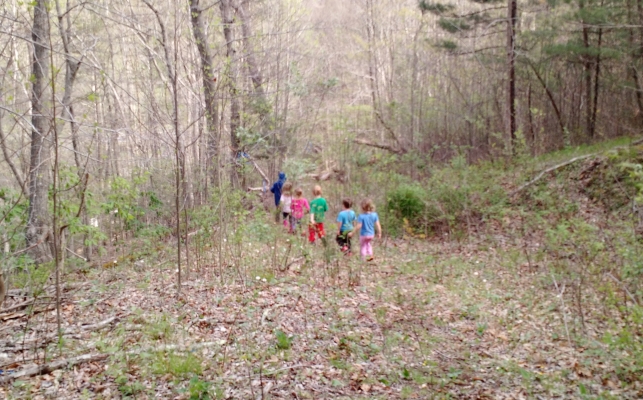In February, The Mayapple School received permission from the adjoining landowner to explore on and collect nature items from his land. I can’t even really describe those first experiences. They were truly amazing and humbling. It made me realize that nothing can stand in for or simulate the wilderness experience. The heart and soul know what is real, and no amount of pre-selected, teacher-approved nature items brought into the classroom could give these kids that unique sense of risk and trust, challenge and wonder that the forest could. Our neighbor owns many more acres of dense forest than the preschoolers could possibly explore, leading to a sense of limitless, unbounded freedom.
We had stepped into the wild before. The creek that divides our tame field from the forest beyond is quite a wild one, and we had found snakes, voles, crayfish, and frogs along its banks. But not having explored over the creek into the wild forest had kept us grounded in what was tame; one glance over our shoulder and we could reach our small known and civilized world.
Going into the forest is different. The wild surrounds us. Some children embrace it from the beginning. Others seem to expend their allotment of bravery and daring more quickly at first, slowly building up stamina as they gain experience. It’s not an easy entry. We have to cross a creek and scramble up a steep bank before reaching the reprieve of a very short old roadbed, which disintegrates quickly, forcing us into the brush towards our next discovery. Each day brings something new: signs of deer like deer bones and scat; a slow-moving box-turtle, lady slipper orchids and bloodroot sprung up seemingly overnight.
Some of our spots are:
- Loglandia, our first big log fallen across the roadbed that beckoned us into the forest and began our forest journey (in the spring, the children also took to calling this the Honeysuckle Tree, from vines that grew around it)
- The Treehouse, a tree cut when it was perhaps already hollow inside, leaving an accessible hollow and a strange strip of bark and wood reaching 10 feet vertically above
- The Secret Passage Tree, a fallen tree with a gap in the trunk;
- Fern Gully, where we also have found many mayapples;
- The Graveyard, with graves from the 1850’s, taken over by forest now;
- The Old Foundation, perhaps from a house or shed;
- The Big Racoon Tree, an uprooted tree over 12 feet in circumference with a hole where “maybe a raccoon lives.”
The terrain is steep and difficult to navigate, and as we’ve explored there have been a couple of days where we have overextended ourselves, attempting to reach a new and unknown area in too short an amount of time. Other days are nothing less than magical. As a teacher, I feel like I’ve only just experienced the very beginnings of what it means to bring children into the forest, but I’ve learned a few things already.
The main thing I’ve learned is that it is worth it. The packing, the wet feet in the creek, the challenge of maintaining sight lines in brushy forest, the scrapes and scratches from brambles and falls off logs. It is so worth the trouble. Trips to the forest repay students and teachers many times over. Students gain self-confidence, and teachers get to see their students in a new light. Students bond with each other. Teachers enjoy their students more. In the forest, it is so easy to be fully present with the students. It reminds me how to be with children. It makes us all excited to learn more about millipedes or whatever else we find. It stimulates a love of learning and an interest in the world around us. It’s adventurous. It’s fun.
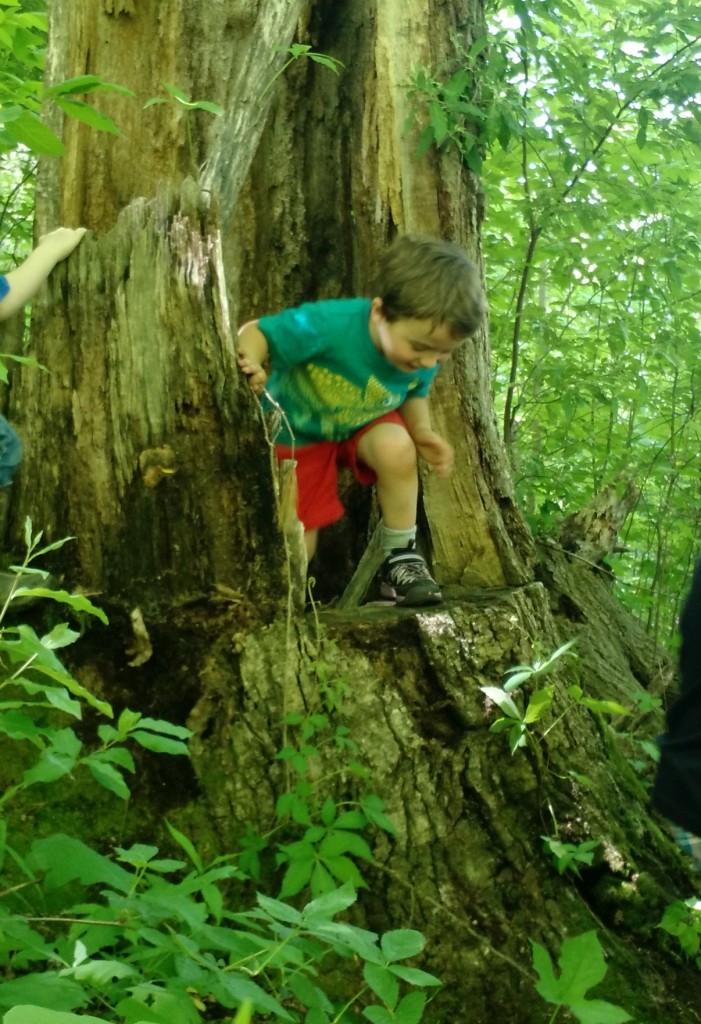
Our “Treehouse” is large enough to fit about half a dozen children inside, while “chairs” outside on the “porch” (the rest of the fallen tree on the ground) offer space for the rest.
I’m looking forward to our new bridge currently being built over the creek, trying out some different activities, and implementing a few different systems to help us increase our forest time and comfort in the forest. I’m pretty sure the forest holds even more discoveries for us next year!
